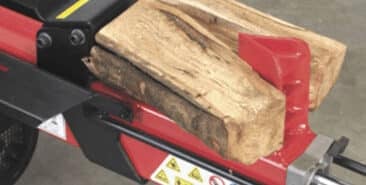Upgrade your workshop with a perfect pillar drill
A workshop for a man is a place to embody his most bold and creative ideas. It is used for various works: car repair, carpentry, metalwork and thousands of tasks that require special tools and equipment. Whether you are processing wood or metal, you often face the need to drill holes. However, there are situations when an electric drill is not capable of providing specific holes parameters. It is almost impossible to make 0,5 – 1 mm holes with an electric drill, as well as too smooth furrows and grooves. Meanwhile, a pillar drill is a piece of perfect equipment allowing to make holes in all the types of materials, ream the existing holes and cut threads.
The modern market offers a vast assortment of pillar drills from various manufacturers. It is not quite easy to make the right choice considering the abundance of models and their features. This article will help you determine your requirements and choose the matching tool for your workshop.
Pillar drill’s construction
The construction of a pillar drill is quite simple:
• Transmission unit
• Motor
• Controls
• Working body
The transmission mechanism is used to transfer movement from the electric motor to the moving body, (namely a drill), which is mounted in a chuck of a spindle. A spindle is rotating due to a belt-drive, providing drilling at various speeds.
Most necessary tips to choose a good pillar drill
The continuity and regularity of work
First of all, you should consider how often you will use your drill. If your goals are commercial, it is better to purchase professional equipment, which is designed for intensive work. Less powerful models need constant breaks every 20-30 minutes.
Tabletop or floor model?
The spindle has a limited ability to use a cutting tool. Most likely, you haven’t any necessity in floor standing unit in your home workshop. A tabletop model is more suitable if you are not going to drill holes larger than 16 mm. However, you should take into account not only the diameter but also the depth of the hole. If the workpiece is made of laminated plastic with a thickness of 50 mm, then a more powerful unit is required. The spindle in such a drill can move low enough along the vertical axis.
If the workpieces to be processed are usually large, then it is better to buy a floor-type pillar drill. Moreover, the worktable should be broad and height-adjustable. If the detail requires processing in a vertical position and the distance is not enough, the table should be removed. Pay attention to this feature when choosing your drilling machine.
Additional options
The most useful feature is speed adjustment. You move the regulator switch to the appropriate position and do your job at the required revs. Digital display and the laser pointer make the use more convenient and your work more accurate and useful.
If your workshop or garage is not too spacious, it is better to choose a compact model, which can be taken away from your workbench if it is needed. There are drilling units with a weight of less than 20 kg. Moreover, if you need to work somewhere outside your workshop, such mobile drills are a perfect solution.
Cutting tools and accessories for your drill
You may also need:
• A tap – a unique attachment for cutting internal threads.
• A reamer – a tool that is required for finishing works after drilling.
• A core drill or countersink is used for processing conical and cylindrical holes. It makes the surfaces smooth and increases the holes diameter.
Final thought
So, we hope that our article has helped you to hunt down the question of pillar drills’ features. Whether you choose a professional unit or not, Triace online shop has a variety of equipment and tools to offer you. Visit our website and make your workshop the perfect space for your inspiration and challenges!

